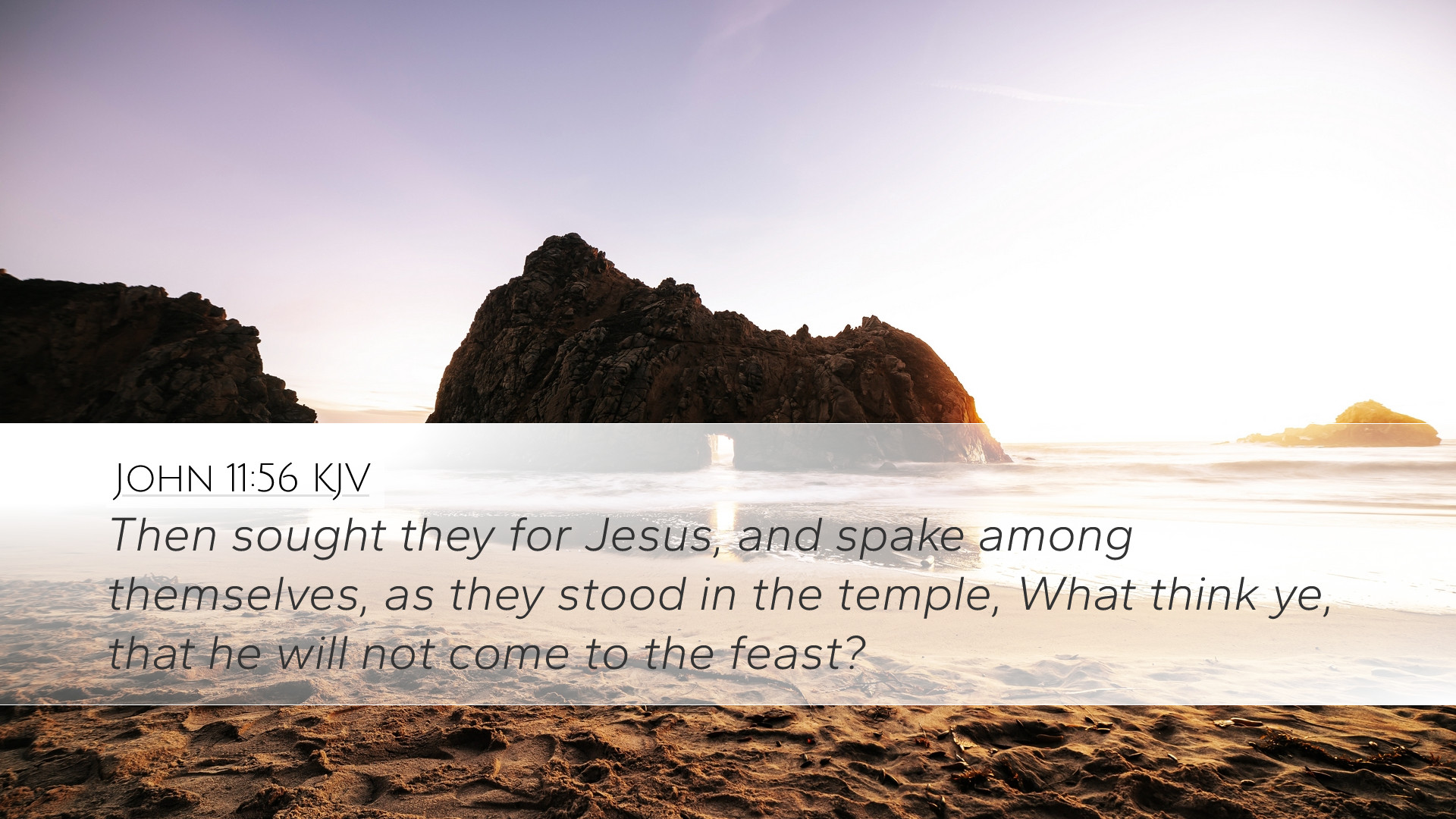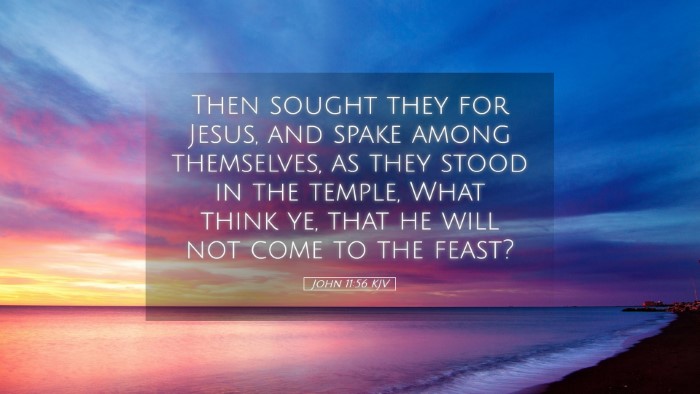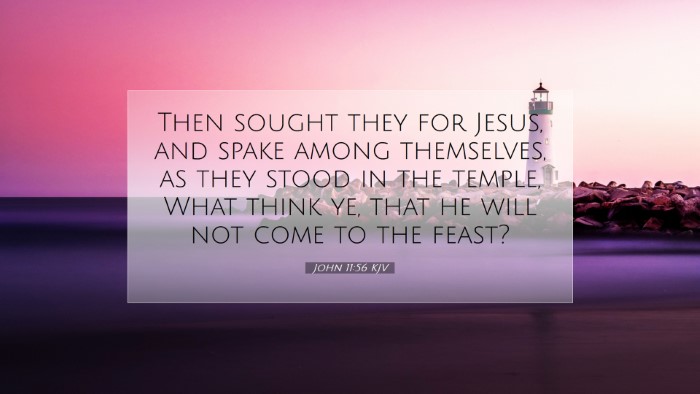Commentary on John 11:56
John 11:56 states: "Then they sought for Jesus, and spoke among themselves, as they stood in the temple, What think ye, that he will not come to the feast?" This verse encapsulates the tension surrounding Jesus’ presence and the expectations of those in Jerusalem at the Feast of Passover.
Contextual Overview
This passage occurs just prior to the events leading up to the crucifixion of Jesus. The preceding chapters set the stage for an increasingly hostile environment as Jesus' popularity and the religious authorities' animosity grow in parallel. The feast serves as a backdrop for significant drama, and the thoughts and conversations of the people reveal their complex attitudes toward Jesus.
Theological Reflections
Scholars like Matthew Henry underscore that the inquiry made by the people displays their curious nature about Jesus’ intentions. His perceived absence becomes a focal point of discussion, reflecting both anticipation and trepidation.
Henry remarks that this reflects the human desire for divine presence, a theme recurrent throughout scripture.
Religious Tension
Albert Barnes notes that the pressure on Jesus from the religious leaders was palpable. His arrival to the feast could trigger unrest and draw even more attention from the authorities. The people’s discussion hints at their hope for salvation through Messiahship, juxtaposed with fear of repercussions from the Pharisees and Sadducees.
Messianic Anticipation
The people’s speculation—"What think ye?"—demonstrates a key dynamic in the Christological narrative; they were divided in their opinion about Jesus. Some believed unequivocally, while others harbored doubts.
- Adam Clarke emphasizes that the prophecy surrounding the Messiah added to the anticipation. Citizens of Jerusalem were hoping for the arrival of a liberating figure.
- Yet, amid their hope, there lurked an underlying fear of the ramifications that his appearance might bring.
Socio-Political Implications
The Feast of Passover was a time of religious fervor and nationalistic pride, considering its commemoration of liberation from Egyptian bondage. Thus, by standing in the temple and discussing Jesus’ potential actions, the people tapped into a well of socio-political sentiment. Barnes asserts that the mention of ‘the feast’ invokes not just a spiritual gathering but a nationalistic affair, invigorating passionate discussions of freedom and oppression.
Desire for Deliverance
Throughout the Gospels, there is a pervasive theme of deliverance, and here, this craving manifests. The people’s question and speculation serve as a reminder of humanity's ongoing search for redemption, not just in the physical realm but also spiritually. The whisper of this yearning is profound and relates to Henry's insights on the human heart's restlessness.
Application for Today's Believers
For modern congregations, this passage offers fertile ground for reflection on faith and expectation. Are believers in pursuit of Jesus with the same intensity? Do they discuss His presence in their lives as the people did in the temple?
- Matthew Henry suggests that believers can take comfort that he indeed does show up to those who seek Him with earnest hearts, even if things don’t appear as expected.
- Barnes encourages the reader to consider their expectations of God in times of uncertainty, believing that He is sovereign despite appearances.
Conclusion
In summary, John 11:56 serves as a poignant reminder of the complex interplay of hope, fear, and expectation surrounding Jesus in the context of His impending sacrifice. Amid the discussions in the temple, there is a charge of divine mystery that resonates with believers today. By exploring this passage, scholars and theologians deepen their understanding of Christ's identity and mission, whether in historical context or modern application.


